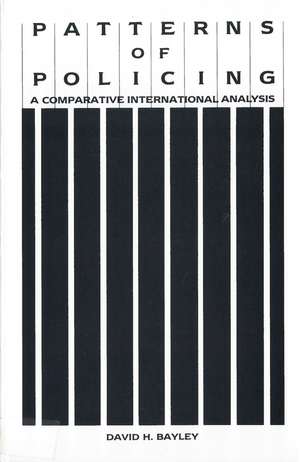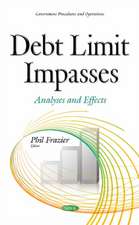Patterns of Policing: A Comparative International Analysis: CRIME, LAW, & DEVIANCE SERIES
Autor David Bayleyen Limba Engleză Paperback – aug 1990
"Patterns of Policing" is the first comparison of the development and operation of police in countries throughout the world, concentrating on Asia, Europe, and North America. Bayley examines the variability in police work, suggests reasons for this variation, and makes preditions about the future role of police.
He considers how contemporary police institutions have developed. Police forces worldwide tend to be public rather than private, to concentrate on crime fighting rather than services, and to be professionally trained and recruited. There is, however, great variation in the structure of police forces, which are generally either centralized or, as in the United States, decentralized.
The behavior of the police toward their constituents also varies by nation. As urbanization and industrialization increase, the public finds itself in greater contact with police and may begin to rely on them more for protection. There are also marked differences cross-nationally in the way police relate to political and community life.
The behavior of the police toward their constituents also varies by nation. As urbanization and industrialization increase, the public finds itself in greater contact with police and may begin to rely on them more for protection. There are also marked differences cross-nationally in the way police relate to political and community life.
Preț: 289.97 lei
Nou
Puncte Express: 435
Preț estimativ în valută:
55.49€ • 57.33$ • 46.16£
55.49€ • 57.33$ • 46.16£
Carte tipărită la comandă
Livrare economică 20 martie-03 aprilie
Preluare comenzi: 021 569.72.76
Specificații
ISBN-13: 9780813516189
ISBN-10: 0813516188
Pagini: 280
Dimensiuni: 152 x 229 x 18 mm
Greutate: 0.4 kg
Ediția:None
Editura: Rutgers University Press
Colecția Rutgers University Press
Seria CRIME, LAW, & DEVIANCE SERIES
ISBN-10: 0813516188
Pagini: 280
Dimensiuni: 152 x 229 x 18 mm
Greutate: 0.4 kg
Ediția:None
Editura: Rutgers University Press
Colecția Rutgers University Press
Seria CRIME, LAW, & DEVIANCE SERIES
Notă biografică
David H. Bayley is a Professor in the School of Criminal Justice at the State University of New York-Albany. He is the author of The Police and Political Development in India and Forces of Order: Police Behavior in Japan and the United States.
Cuprins
List of Figures
List of Tables
Preface
Part 1 - Introduction
1 Toward a Theory of Policing
Part 2 - Evolution
2 The Development of Modern Police
3 The Structure of Policing
4 Police Strength
Part 3 - Function
5 Police Work
6 A Theory of Encounters
Part 4 - Politics
7 Control of the Police
8 Police in Political Life
Part 5 - Conclusion
9 Future of Policing
Appendix
Notes
Bibliography
Index
List of Tables
Preface
Part 1 - Introduction
1 Toward a Theory of Policing
Part 2 - Evolution
2 The Development of Modern Police
3 The Structure of Policing
4 Police Strength
Part 3 - Function
5 Police Work
6 A Theory of Encounters
Part 4 - Politics
7 Control of the Police
8 Police in Political Life
Part 5 - Conclusion
9 Future of Policing
Appendix
Notes
Bibliography
Index
Recenzii
An eye-opening and somewhat heroic construction designed to shift our perspective on the nature and causes of police work... important and long overdue... By design, it is an empirical and wide-ranging work that pays attention to the available numbers and public claims of police officials.
Bayley has posed key questions on police functioning... and responded by using a model-building approach based on theoretical propositions and subjected to an international data base.
Bayley has posed key questions on police functioning... and responded by using a model-building approach based on theoretical propositions and subjected to an international data base.
Descriere
Patterns of Policing is the first comparison of the development and operation of police in countries throughout the world, concentrating on Asia, Europe, and North America. Bayley examines the variability in police work, suggests reasons for this variation, and makes predictions about the future role of police.













